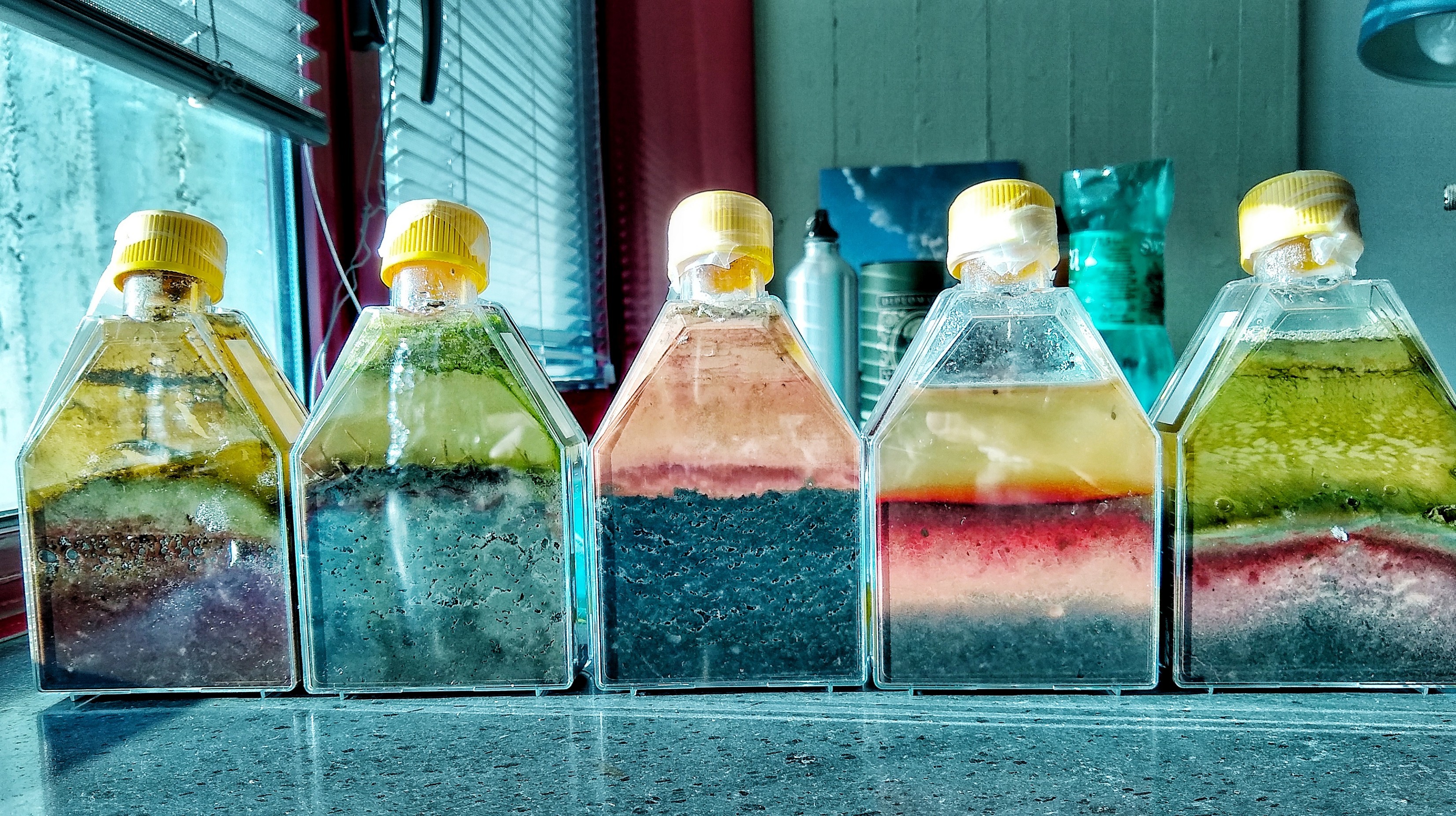2 min to read
How to build microcosmos
Vinogradskij's Column, one of the simplest examples of microcosm, explained.

Each eye alone gives us a field of vision of about 130 degrees, with two eyes, we can see almost 180 degrees, not a lot when you think of the boundless dunes, reliefs and depressions that researchers traverse and observe during their expeditions. It is even less if you think of the inherent complexity of what the eyes cannot see: the intertwining of bacteria, the succession of chemical reactions that influence each other and decide the fate of what is visible. How, then, to contain everything in a single view? Indeed, this can be done through experiments in microcosm that shrink reality and make it scrutinisable in its entirety.
The microcosm is a type of artificial experiment used to simulate the behaviour of natural ecosystems under controlled conditions. Such an experiment makes it possible not only to analyse what happens in nature, but also to predict what would potentially happen if certain conditions were changed, thus acting as a bridge between theory and nature.
A typical example of a microcosm is the Vinogradskij Column, a small device invented by microbiologist and Russian ecologist Sergei Vinogradskij in 1880s, to examine the diversity of soil bacteria. The Vinogradskij Column consists of a glass container into which mud, water, sources of carbon (such as cellulose or eggshells), sulphur (obtainable from egg yolks), minerals and vitamins (thanks to a simple multivitamin) are placed. The column is then exposed to sunlight for a few months until two gradients (gradual changes by composition of the created environment) are formed: one based on the amount of oxygen present and another based on the different concentration of sulfur. Both gradients contribute to the growth and changeof microbial populations. From the top down, protists, diatoms and cyanobacteria that will take advantage of the aerobic conditions of the column and the light to which it is subjected, then sulfur-oxidizing bacteria such as Thiobacillus, purple sulfur and green bacteria such as Chromatium and Chlorobium, sulfur-reducing bacteria such as Desulfovibrio and obligate anaerobic bacteria such as Clostridium. The column thus formed displays a straordinary variety of colors due to the microbial diversity, andallows a miniature reconstruction of what is really happening in the soil, making it possible to assess balances, population dynamics and growth conditions.

Vinogradskij’s column is perhaps the simplest example of an experiment in microcosm, but it is not the only one. Of growing interest are experiments in biotechnology, toxicology or astrobiology, carried out to understand more of the complexity of nature. The microcosm is like a snow globe around which the human eye can swivel to scan, observe and analyse the secrets of the macrocosm.
